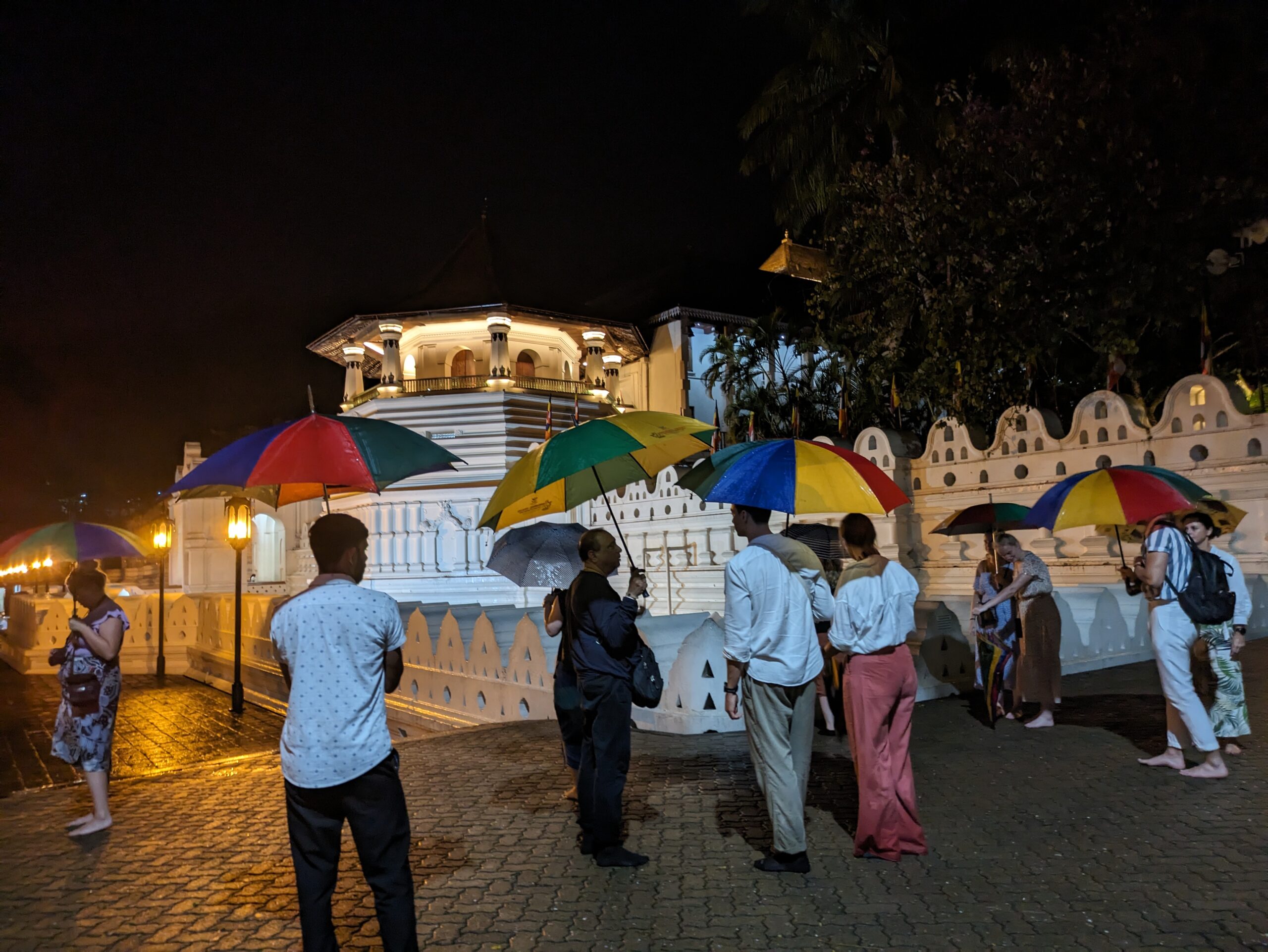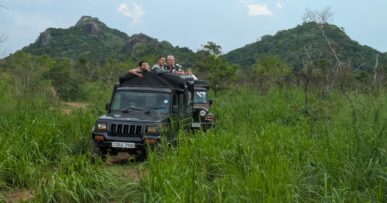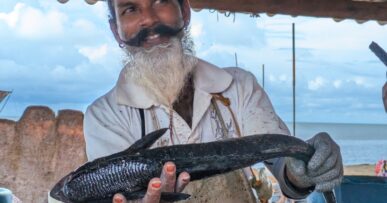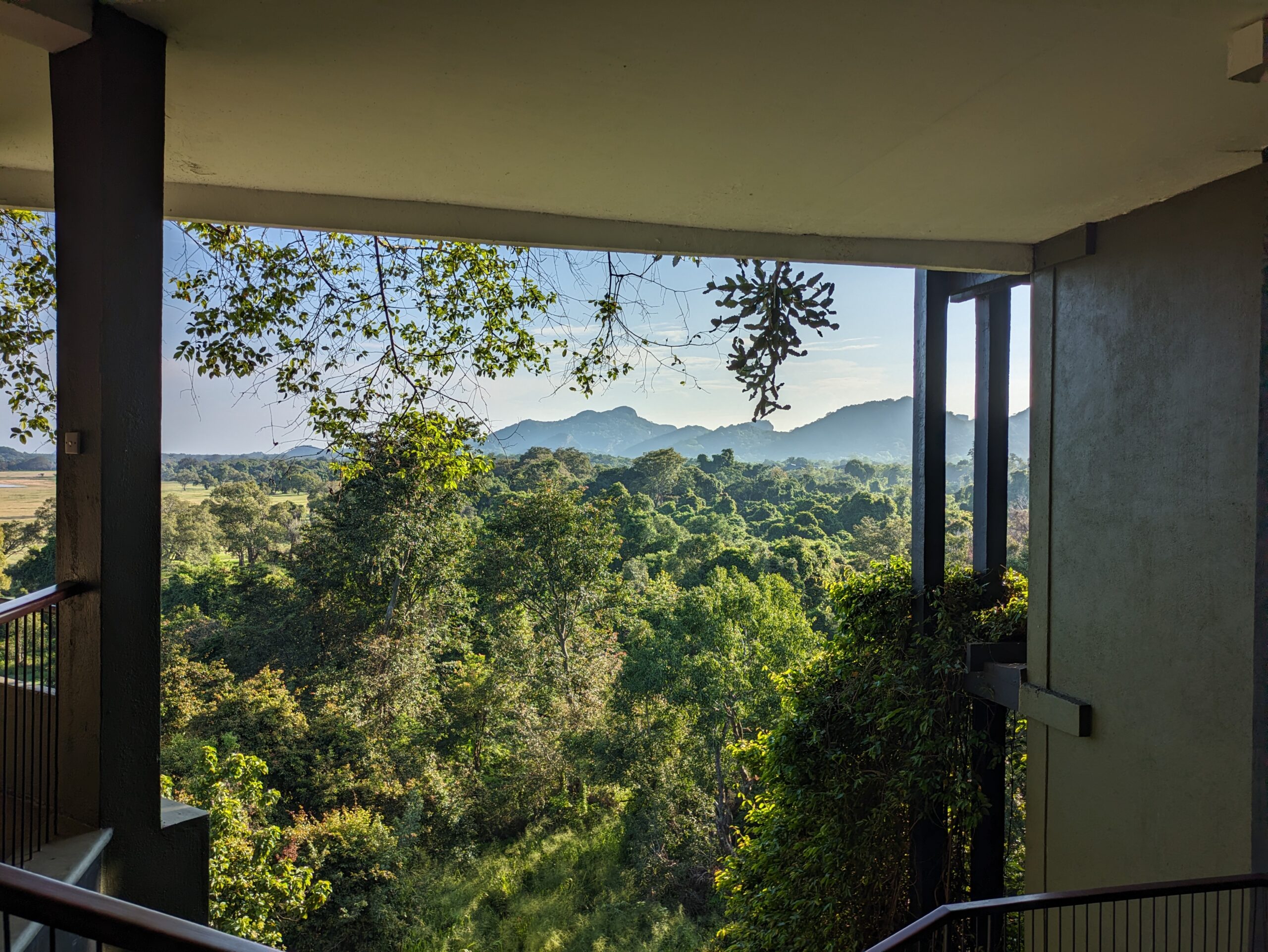
From the jungle to 5 World Heritage sites in 5 days
Starting at a hotel embedded in the jungle, I was able to travel to five World Heritage sites in five days.
The Heritance Kandalama at Dambulla (“heritance” signifies heritage, inheritance) acknowledges the first rights of monkeys and elephants to their tropical paradise. Its gardens, hung by man, cascading by nature, allow you to embrace the jungle first hand from the safety of your suite. Monkeys gambol outside the windows and signs warn that they also find the suites enticing…so keep your balcony door closed. And yes, one morning, elephants were browsing just outside the hotel walls, one hanging its trunk over the basement ledge as it ambled by with a mate.
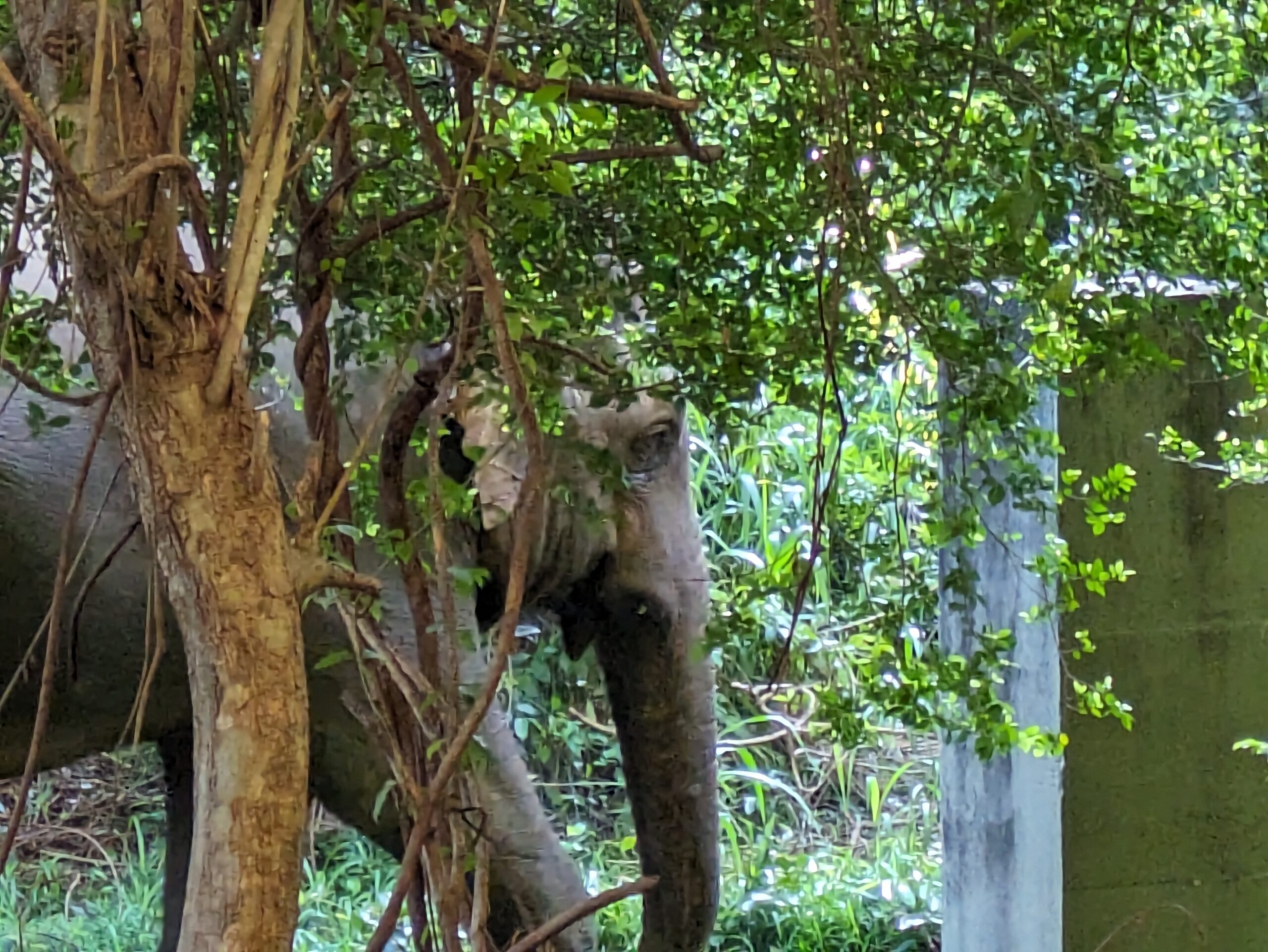
This hotel celebrating jungle and natural rock formations, was built in the style of Tropical Modernism, an architectural style born in Sri Lanka.
Rangiri Dambulla Cave Temple
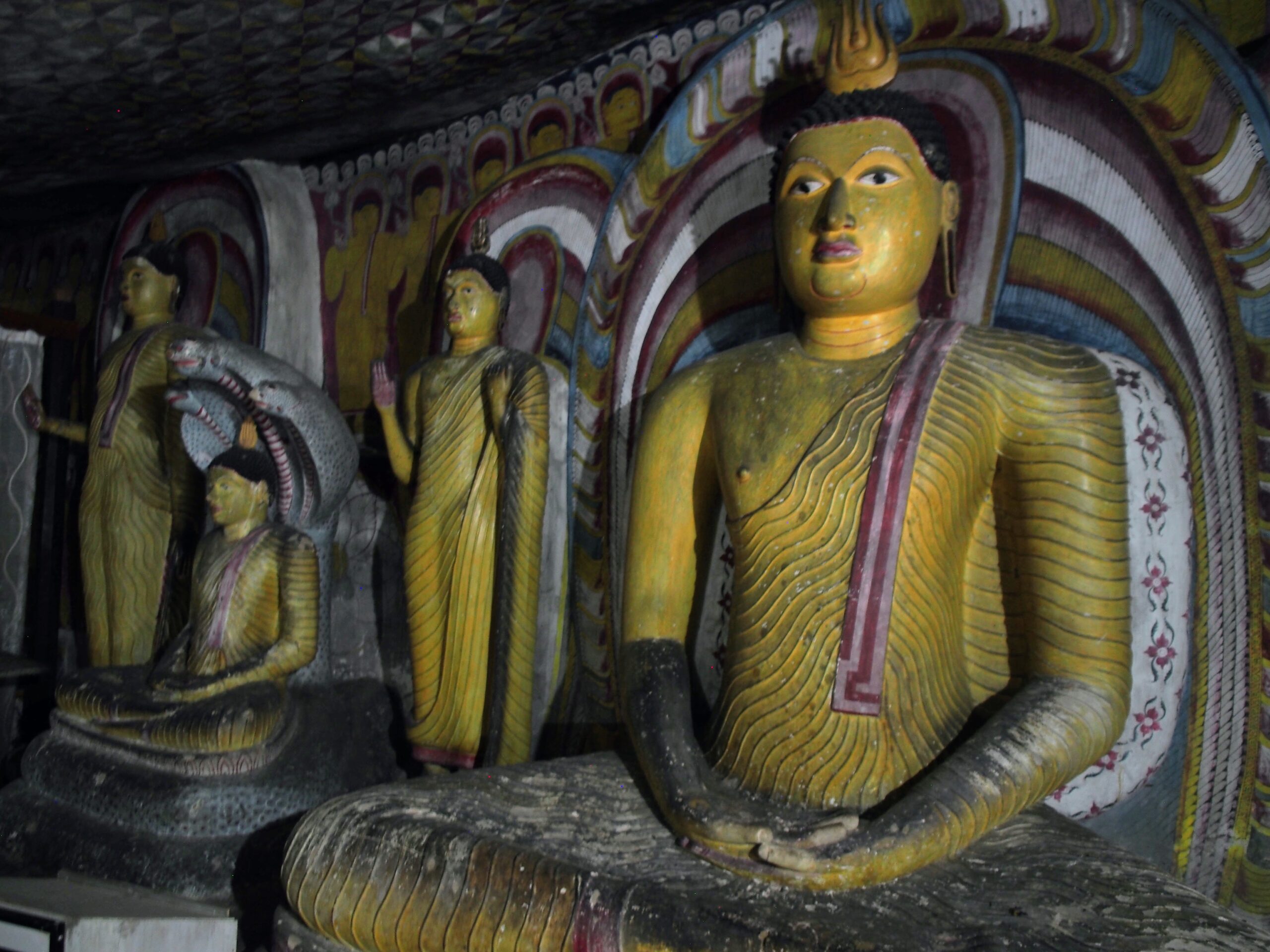
The experience
Only 17 kilometers away from the Heritance Kandalama, is an unassuming entrance in a park several hundred meters below the Rangiri Dambulla Cave Temple. No doubt the care and respect of monks and a population which is 70% Buddhist, has protected this sacred site for its life of twenty-two centuries. It undeniably venerates Buddha, with 157 statues of him and many more detailed murals and paintings on walls and ceilings.
The coloration of the the walls, and the ceilings is exquisite and extends to intricate detail in the feet of Buddha or the painted embroidery carved into the Buddha’s pillows.
The paint hasn’t been there for twenty-two centuries, because renewal has been part of religious ritual for all the life of these carvings, paintings and murals. Golden Buddhas vary in poses, sizes and context. Each individually invites floral offerings and veneration or in my case, simple admiration.
Also known as the Cave Temples, there are now five remaining open caves or rooms, behind white-washed facades, some built into natural rock faces and some into man-made spaces.
The UNESCO rating Inscribed in 1991 for “human creative genius” and “its association with living traditions of outstanding universal significance”.
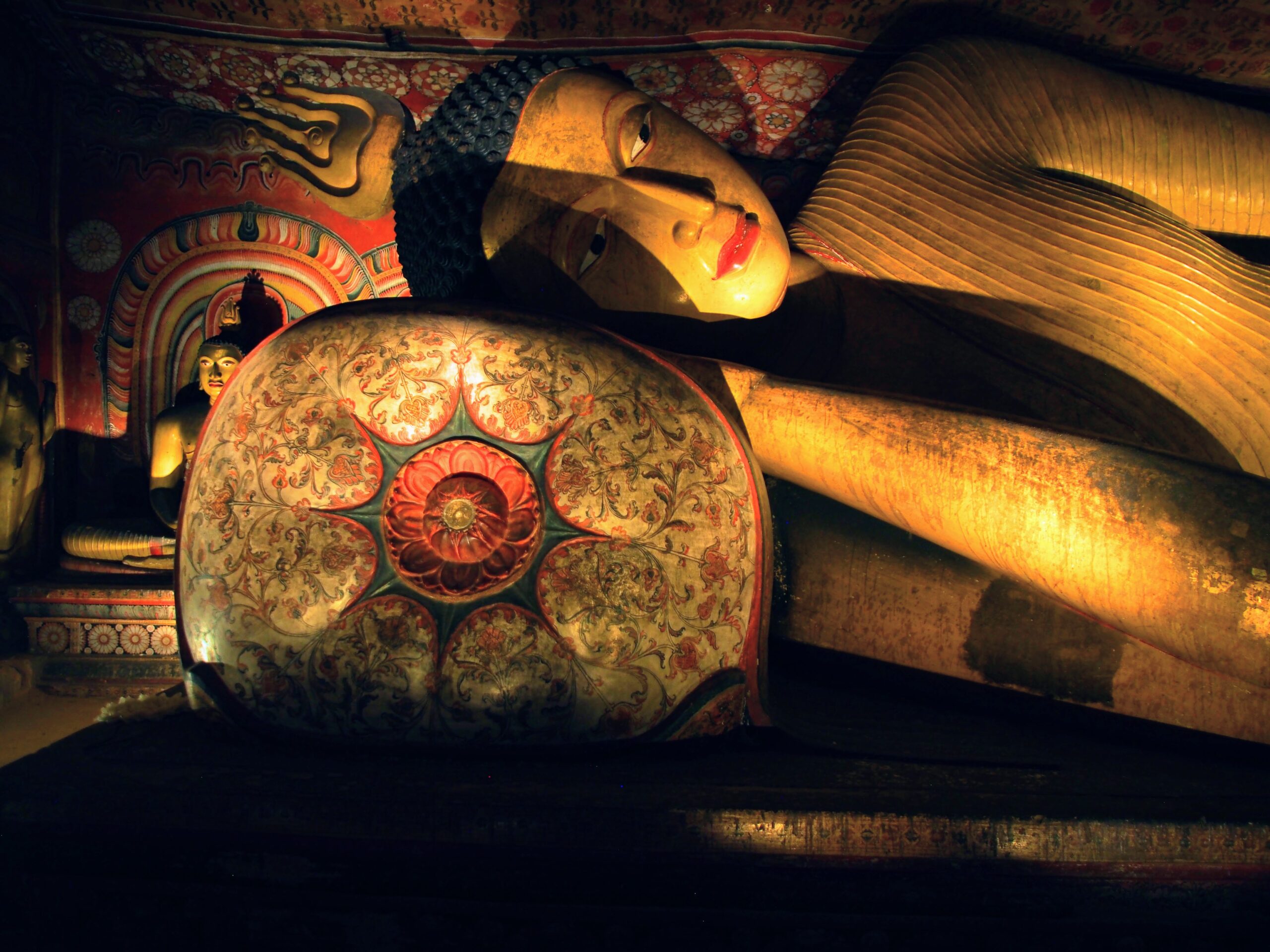
Ancient City of Sigirya
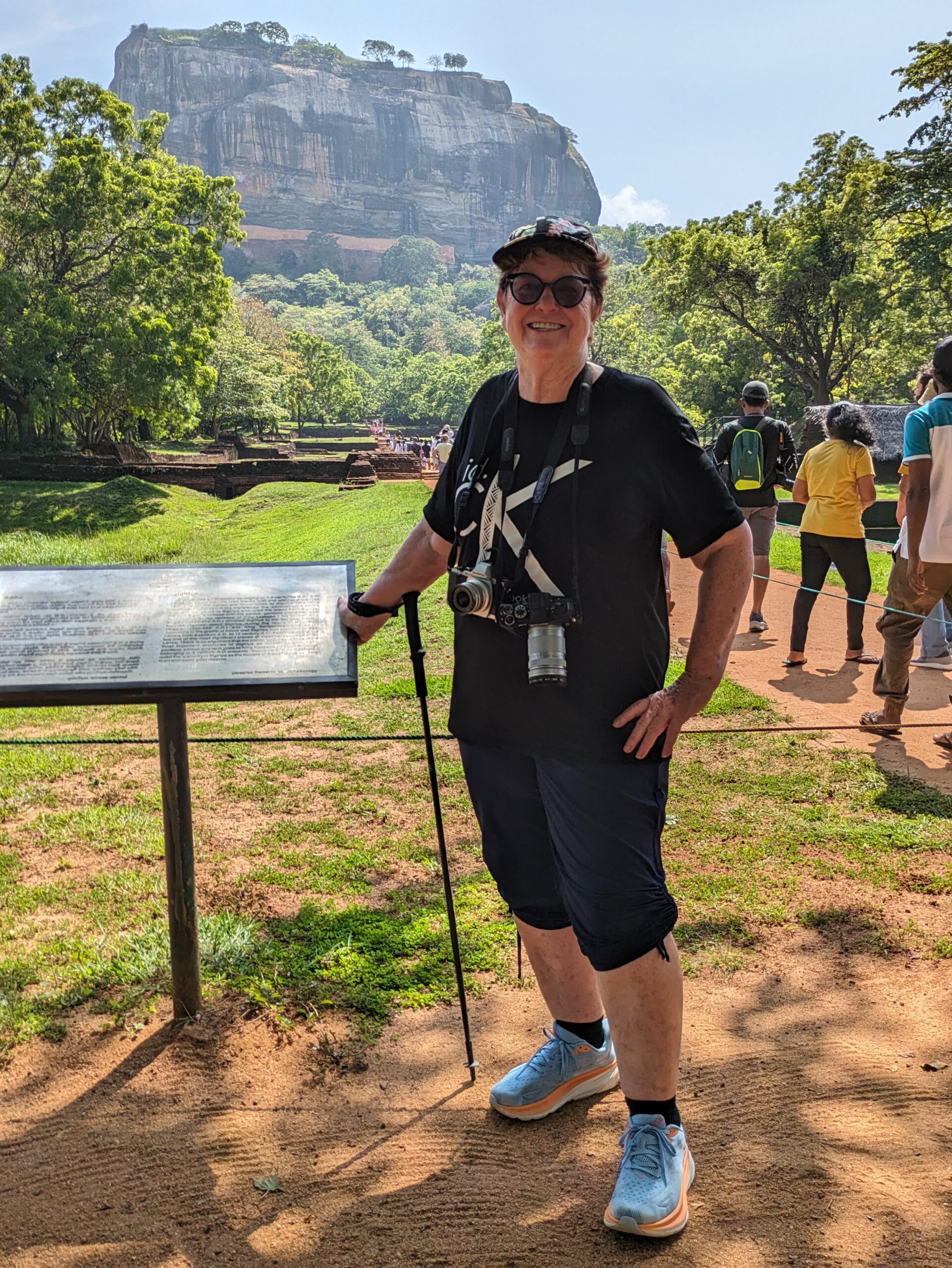
The experience
Within 23 kilometres of Heritance Kandalama, is the entrance park the Ancient City of Sigirya, otherwise abbreviated to Sigirya (“Lion”) Rock.
It isn’t a site you simply amble up to, to grab a photo opportunity after a polite little drop off from your tour bus. It’s a site that you can only adequately experience if you climb the 1201 steps (it’s 370 meters high) from the moat at the base to the compound atop Sigiriya Rock. I was a little wimpy and hired a local (certified) guide to make sure I made it to the top.
A highlight is a little detour complete with its own guards and winding staircase, that takes you to some frescoes on the walls painted hundreds of years ago in subtle hues. Its a type of watercolor paint that easily deteriorates and quickly dries during the painting process, so errors in the original work show through. But you are looking at figures beautifully conceived if not perfectly executed.
Don’t ignore the signs. If you take photos of these frescoes, handcuffs will be the next step. Preserving the heritage is the ultimate aim here.
The frescoes depict women who may have been members of King Kassapa’s (477 to 495 AD) harem. Tourists started visiting the site from about 100 years after the complex was abandoned and it became a monastery. The tourists have left their mark on the mirror wall with graffiti and poems, many translated and providing insight into the times.
In addition, beautiful desert colors in the rocks pleased the eye here.
The UNESCO criteria: Inscribed in 1982 for Interchange of Values; Testimony to Cultural Tradition; Significance in Human History.
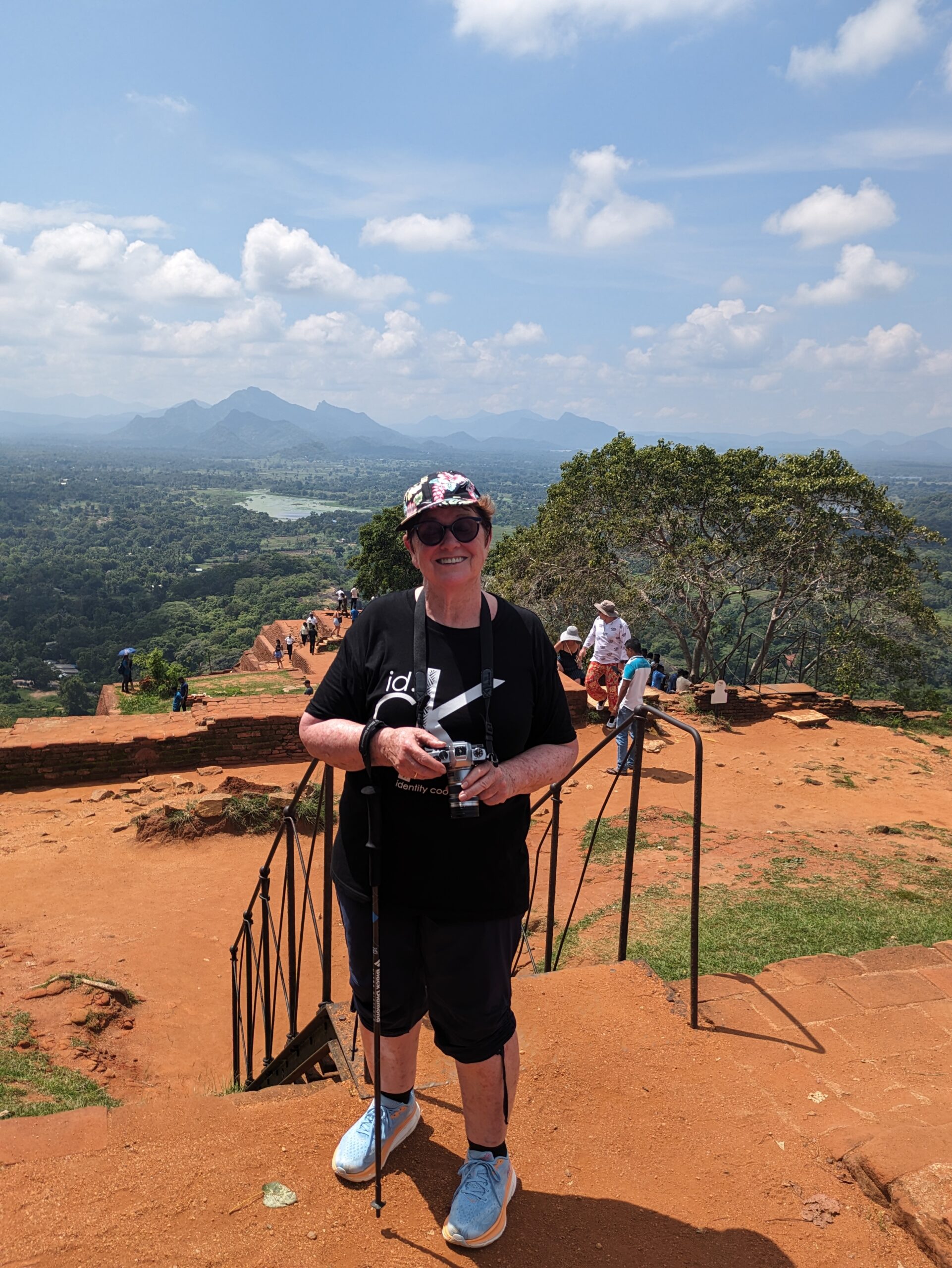
Sacred City of Kandy 
Visitors at Kandy Temple: Rain, Hail or Shine © Marjie Courtis
The Sacred City of Kandy is the religious center and a global pilgrimage site for Buddhists. The tooth relic of Buddha was brought from Hindu India to protect it from marauders to the safety of Buddhist Sri Lanka.
It was the location of the last Sinhalese kingdom of Sri Lanka, surviving for 2500 years before British colonial rule began in 1815.
At Kandy Temple, the reverence (and queuing patterns) of Buddhist pilgrims, the overcrowded spaces, the masses of offerings and the variety of pilgrims provided a tension that showed the significance of this World Heritage Site.
An international festival is held each year for the feast of Esala Perahera, when one of the inner caskets used to hold Buddha’s tooth relic is paraded through the streets in grand style. (The next time will be August 2024)
The UNESCO criteria: Inscribed in 1988 for significance in human history; Heritage associated with events of Universal Significance.
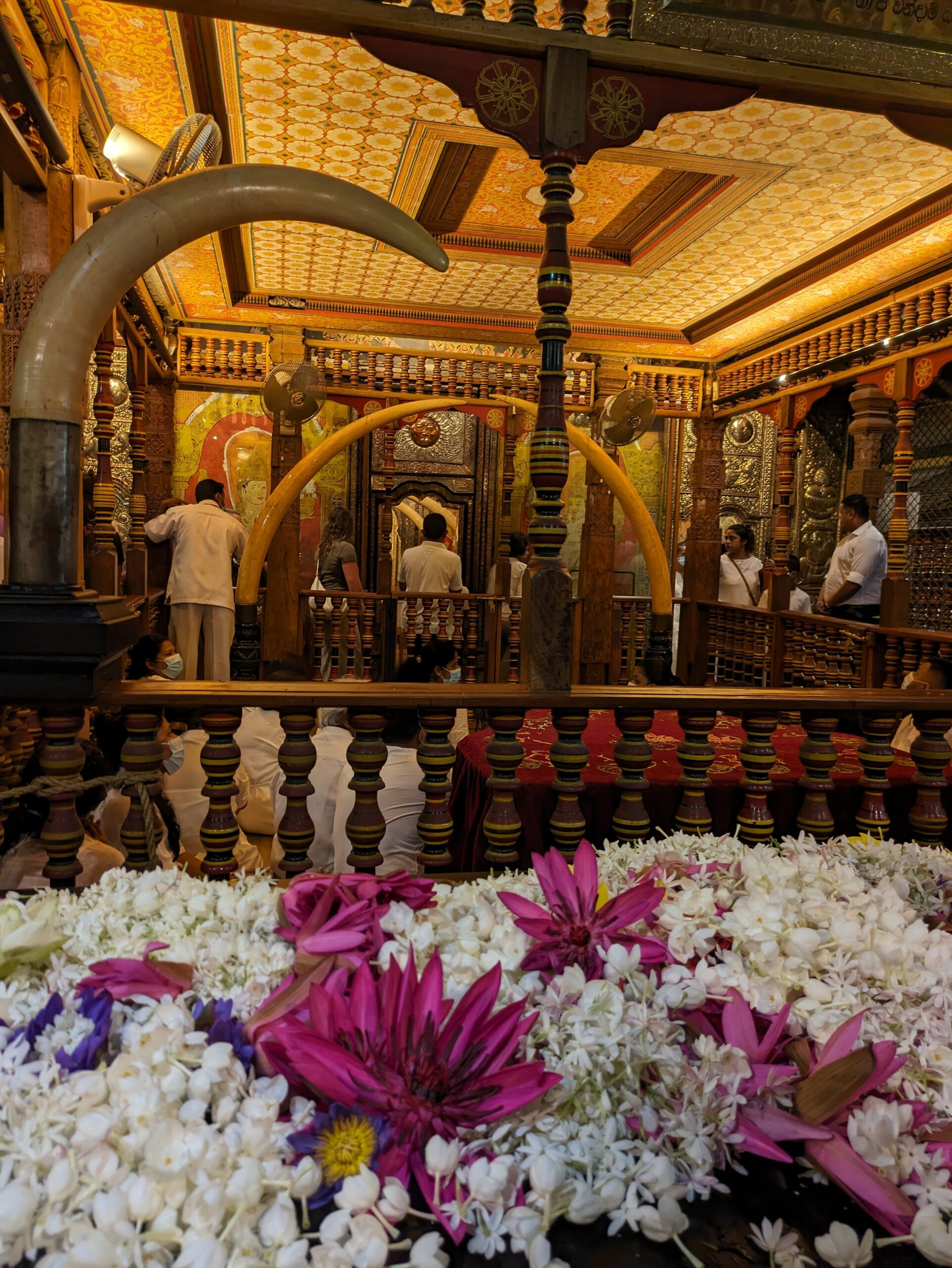
The Ancient City of Polonnaruwa
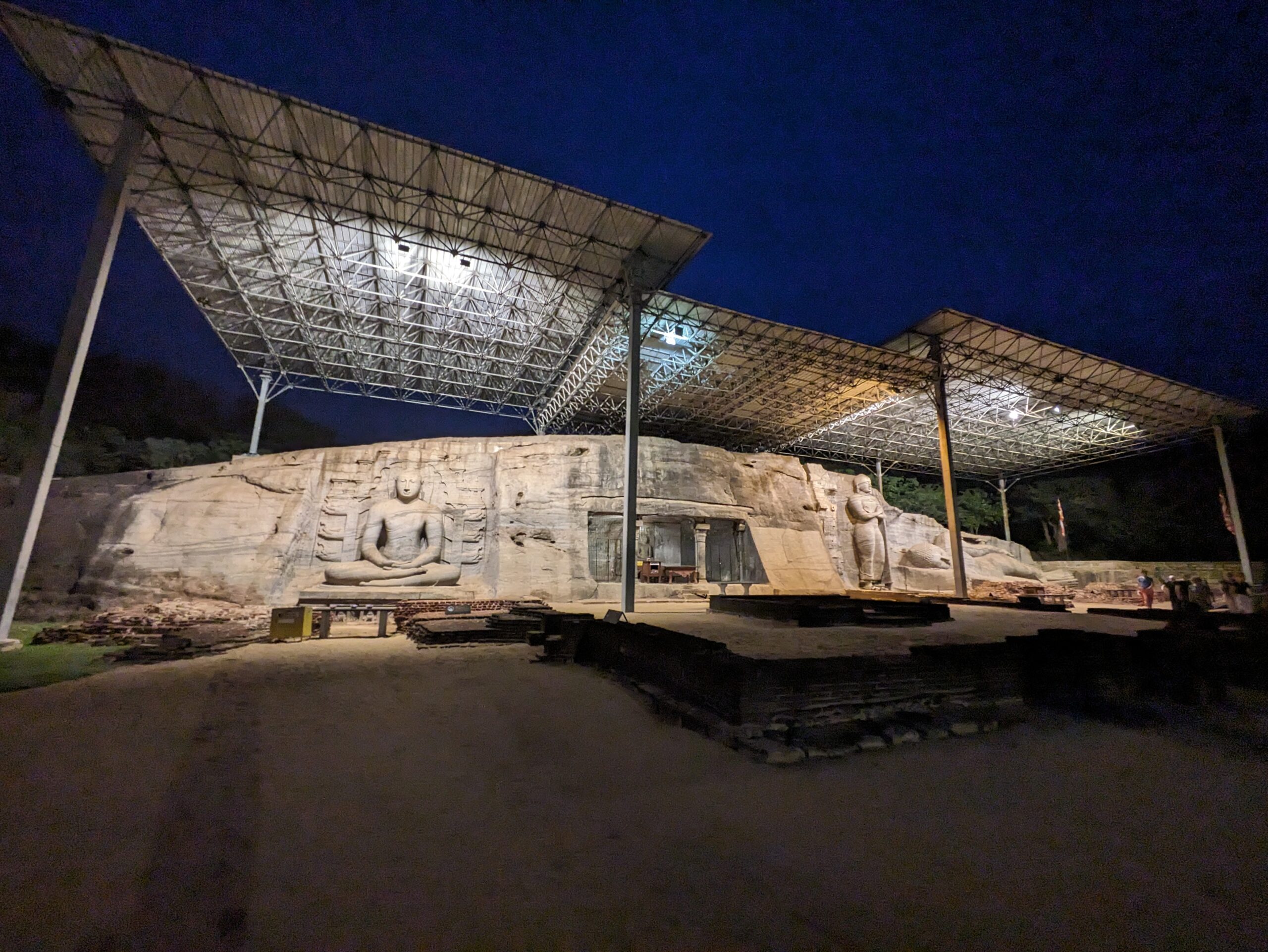
Sri Lanka’s World Heritage Sites help provide a potted history of the movements across the country of the former kings of Sri Lanka. This ancient city is no exception. Two kings held sway here in the twelfth century and built irrigation systems gardens and monuments to provide a splendid regal location.
Polonnaruwa also represents a stop on the long journey of the ancient tooth relic of Buddha, now in Kandy, which was associated with the location of the Sinhalese monarchy.
Polonnaruwa has had treasures removed, as well as experiencing some deterioration. So a jump of imagination is needed. Nevertheless intact buddhas in respectful poses in turn engendered respect and we always removed our shoes to enter these temples. Fellow travelers could not face us if we took a photo of an image of Buddha. No, that would have meant their backside was in Buddha’s gaze. Never to be allowed.
In Sri Lanka, unlike in say, Myanmar, you can leave your socks on in a Buddhist temple. It will be my definite preference next time. My toes weren’t in good enough shape to resist some of the little bugs lurking invisibly in the ground. So keep your socks on!
The incomparable part of the Ancient city of Polonnaruwa was the area of Uththararamaya (Gal Vihara). Buddhist statues are lying, standing, dying in one outside space at this ancient city. Exquisitely carved from the in-situ natural rock, they showed minute details of cloth folds, human features, and spiritual clues. They were serene and created serenity.
The UNESCO rating It was inscribed on the World Heritage list in 1982 for meeting the following criteria of a World Heritage site: Human creative genius; Testimony to cultural tradition; Heritage associated with events of universal significance.
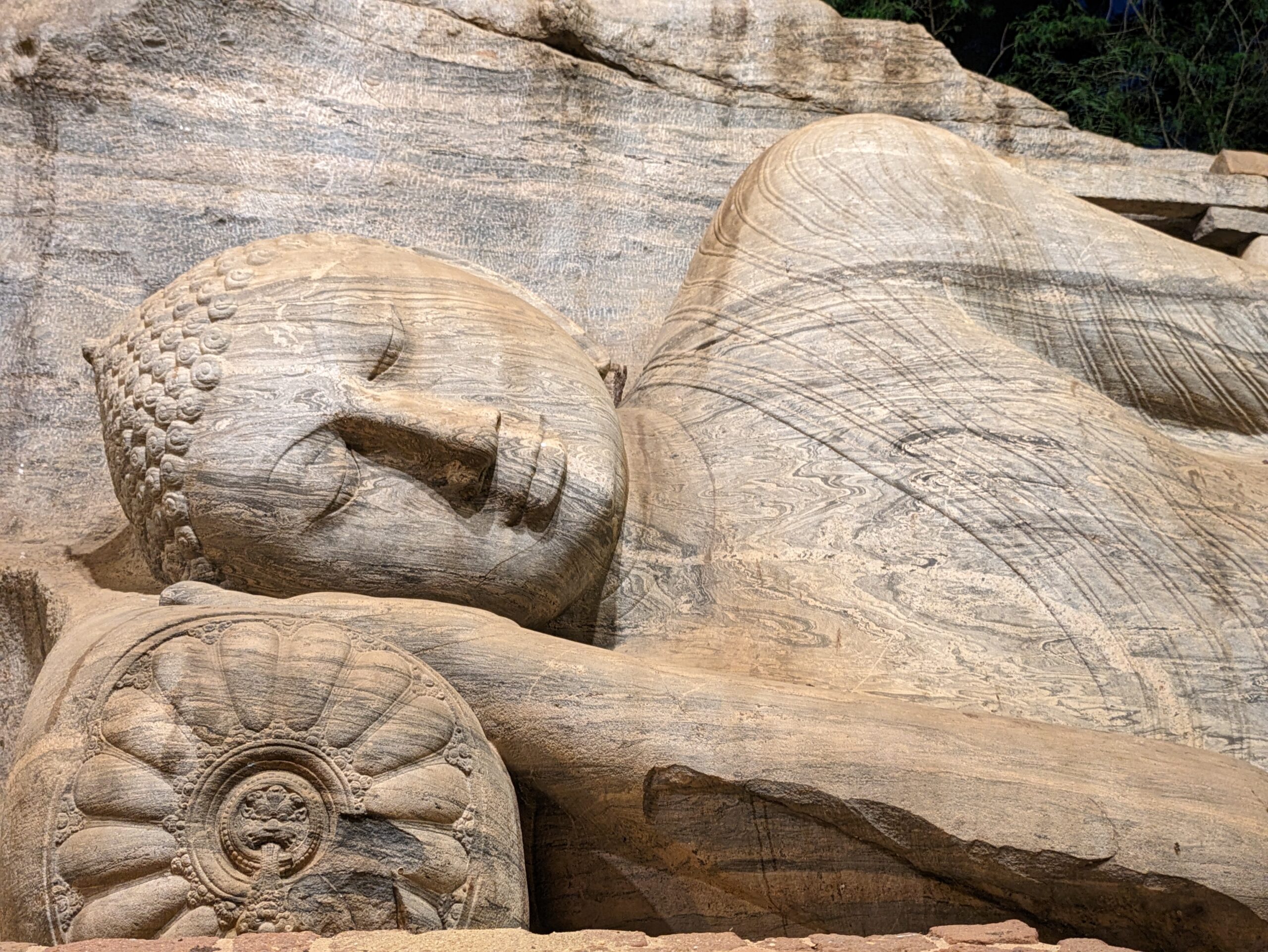
Old Town of Galle and its fortifications
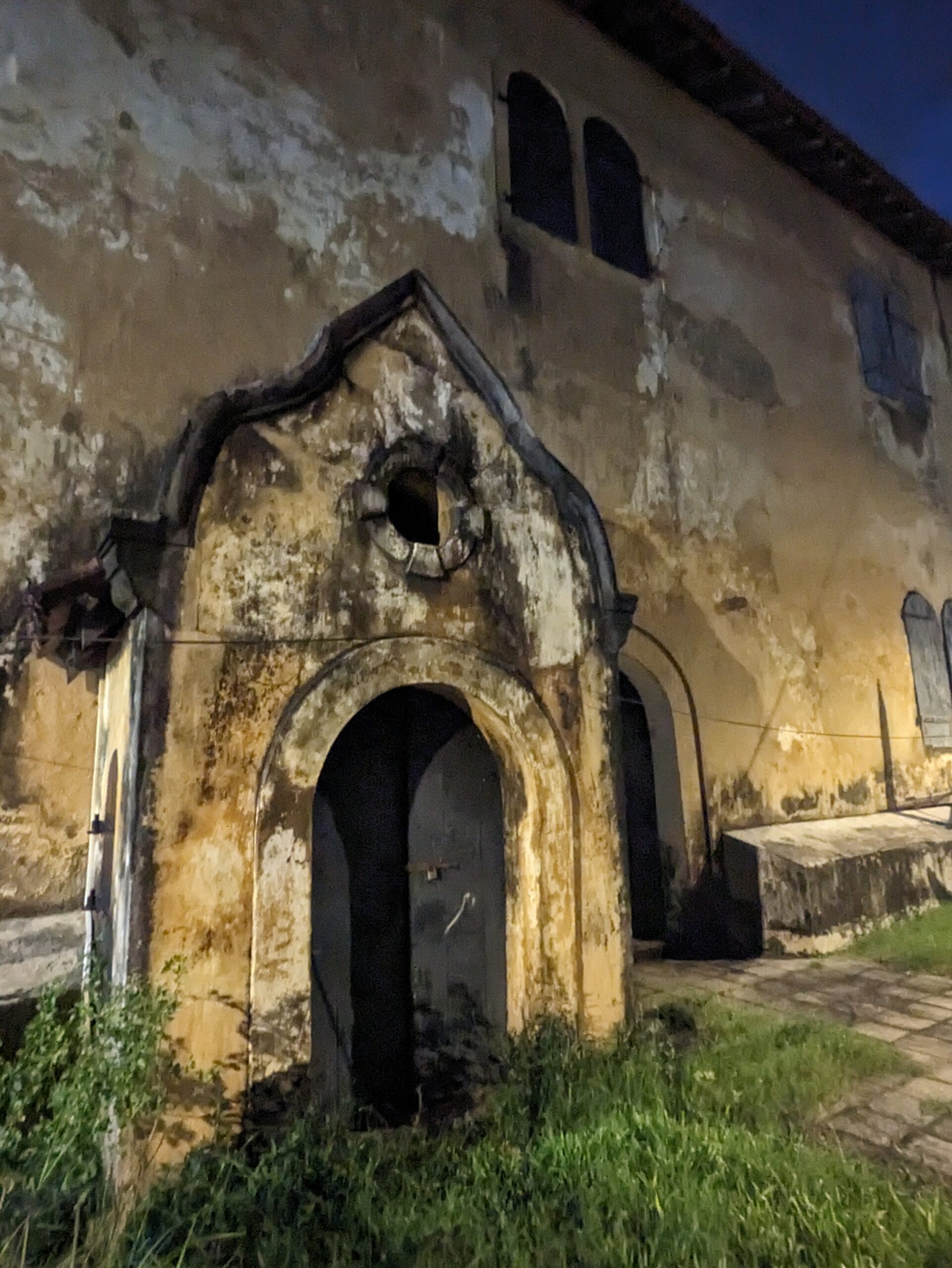
The experience
We entered through grand gates of the wall of the once-Portuguese fort that was soon captured by the Dutch. It’s a large complex of homes, churches, schools, battlements and the trappings of old military and administrative quarters and hospitals. It also shows signs of British occupation when Sri Lanka was Ceylon.
As a once-fortified city it represents an architectural style that showcases the interaction between European architectural styles and south Asian traditions, adapting to the “geological, climatic, historical, and cultural traditions” of Sri Lanka (from the World Heritage citation). For example, coral is used in the fortified buildings and bastions along with granite.
With modern day building conversions, it has becomes the place for tourists at night, with a huge selection of restaurants, tea shops and plenty of locals trying to sell you their handiwork. I was tempted by some presumably-fake coins of the Dutch East India company. They told me they were coins from ship-wrecked vessels, plundered centuries later. They looked very convincing. It was a lesson for me.
The history
The UNESCO rating Inscribed in 1988 for Significance in Human History
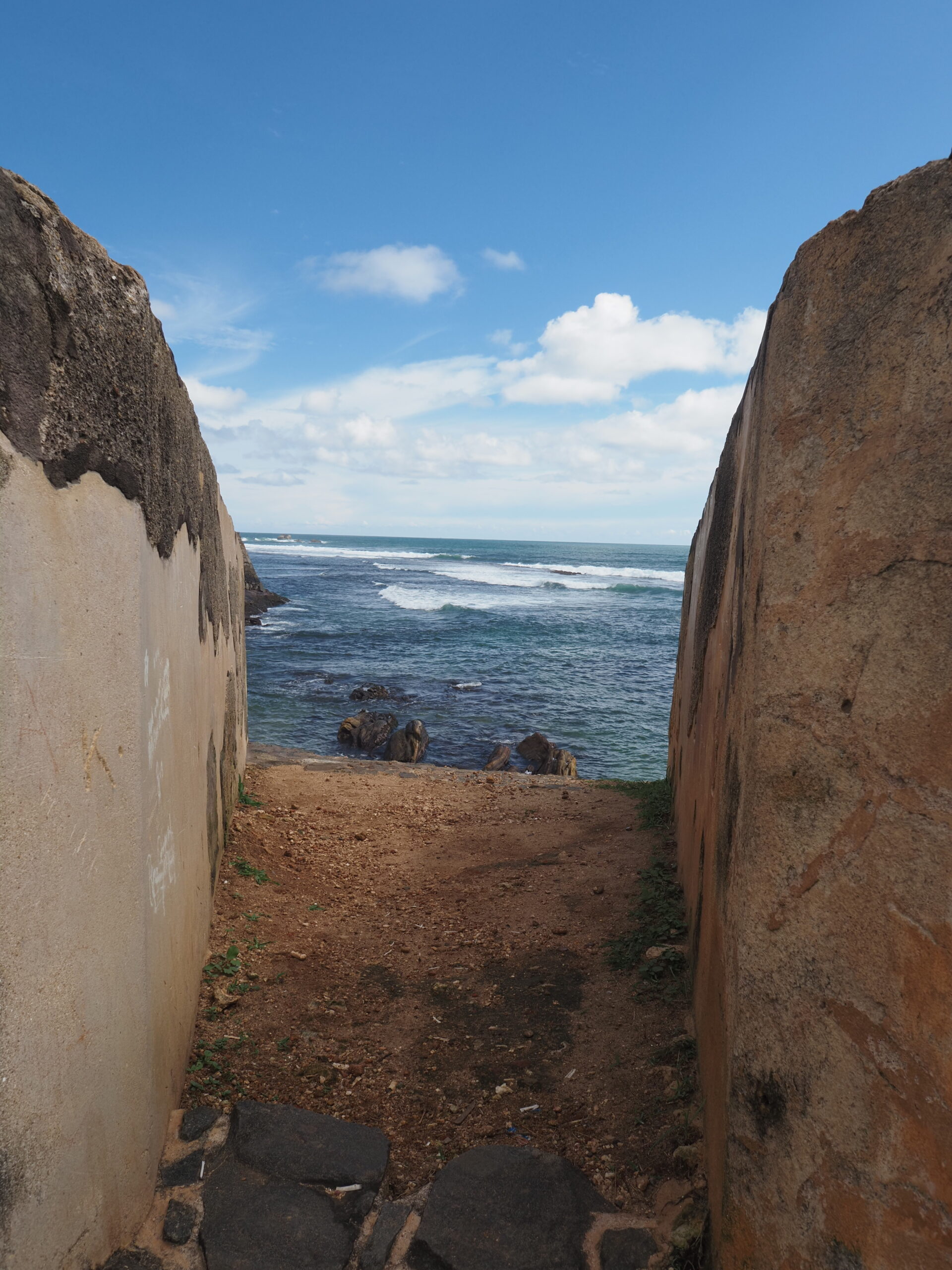
While I only saw five of Sri Lanka’s eight World Heritage sites during my short stay, I was astounded at what else I saw in my short seven day stay.
Even a base like the Hotel Kandalama had provided a somewhat immersive jungle experience, with elephants flapping their ears and sounding a warning to me when I strayed beyond the concrete boundary of my concrete and glass cage. It was where I belonged.
And its location was on the edge of Lake Kandalama, a man-made lake created 1000 years ago to water the rice fields, with the infinity pool of the hotel leading seamlessly down to the lake. Its exterior blended subtly into the landscape, scarcely visible as our bus crept warily along the narrow road on the other side of the lake, vigilant for any oncoming bus, which would either force it to back up or require it to sidle very closely past it.
Every moment was an experience in Sri Lanka. It’s not just the listed World Heritage sites. It’s natural and cultural heritage, past, present and emerging, is everywhere.
The writer traveled at her own expense with TripaDeal and Sri Lankan Airlines For more articles by Marjie Courtis about Sri Lanka, see Two for One Tours: What’s in it for a Traveler? and Out and About in Negombo

